Two Conversations with Bruce Duffie.
The first is mainly about the basset horn,
and the second is devoted to new music.
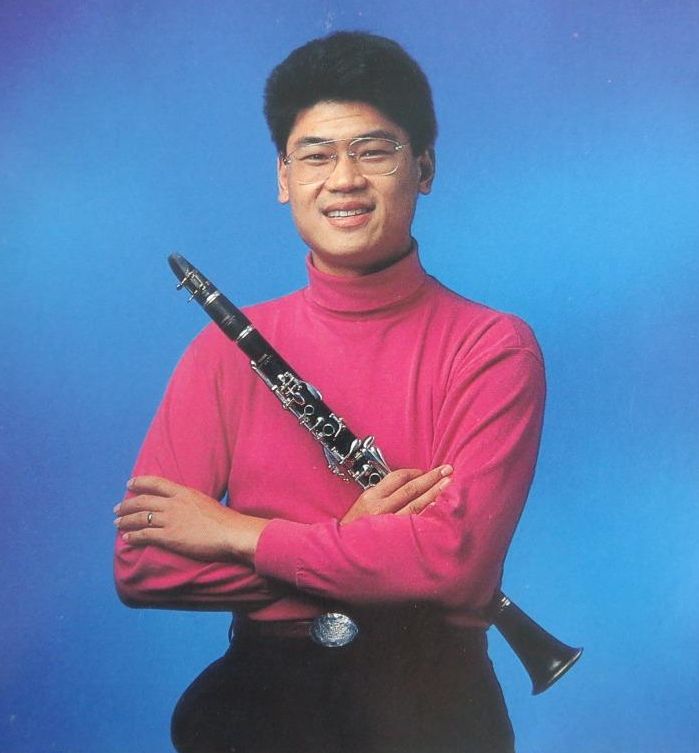

|
John Bruce Yeh joined the Chicago Symphony Orchestra in 1977, the first Asian musician ever appointed to the CSO, and is now the longest-serving clarinetist in CSO history. Having joined the CSO at the invitation of Sir Georg Solti as Clarinetist and Solo Bass Clarinetist, John is currently Assistant Principal and Solo E-flat Clarinet of the orchestra. He served the CSO as Acting Principal Clarinet from 2008-2011, and has also performed as guest principal of The Philadelphia Orchestra and the Seoul Philharmonic in Korea. A prize winner at both the 1982 Munich International Music Competition and the 1985 Naumburg Clarinet Competition in New York, he continues to solo with orchestras and perform on chamber music series and festivals around the globe. A Yamaha Performing Artist since 1990, John has toured China under the auspices of the Yamaha Corporation. John has performed concertos with the Chicago Symphony Orchestra on several occasions, including the 1998 American premiere of Elliott Carter's Clarinet Concerto with Pierre Boulez conducting, and the 1993 performance of Carl Nielsen's Clarinet Concerto with Neeme Järvi. A concert recording of the Nielsen was released on the CSO CD set Soloists of the Orchestra II: From the Archives, vol. 15. In 2004, John was featured in Leonard Bernstein's Prelude, Fugue and Riffs in collaboration with the Hubbard Street Dance Company and the CSO conducted by David Robertson. An enthusiastic champion of new music, John is the dedicatee of
new works for clarinet by numerous composers, ranging from Ralph Shapey to John
Williams. His more than a dozen solo and chamber music recordings
have earned worldwide critical acclaim. A 2007 release by Naxos is a
disc titled Synergy, of single and double concertos with
clarinet featuring John, his wife Teresa and his daughter Molly.
John is director of Chicago Pro Musica, which received the Grammy Award in 1986 as Best New Classical Artist. With clarinetist Teresa Reilly, erhu virtuoso Wang Guowei and pipa virtuoso Yang Wei, John formed Birds and Phoenix, an innovative quartet dedicated to musical exploration by bridging Eastern and Western musical cultures. Passionately committed to music education, John has taught master classes at Juilliard, Eastman, Manhattan School of Music, The Cleveland Institute and many universities and arts academies worldwide. He is on the artist-faculties of Roosevelt University's Chicago College for the Performing Arts, and Midwest Young Artists in Fort Sheridan, Illinois. John is the proud father of Jenna Yeh, a culinary artist and wine specialist in Chicago; Molly Yeh, a percussionist and award-winning blogger in Minnesota; and Mia Reilly-Yeh. === From the Yamaha website (artists)
=== Links in this box and below refer to my interviews elsewhere on my website. BD |
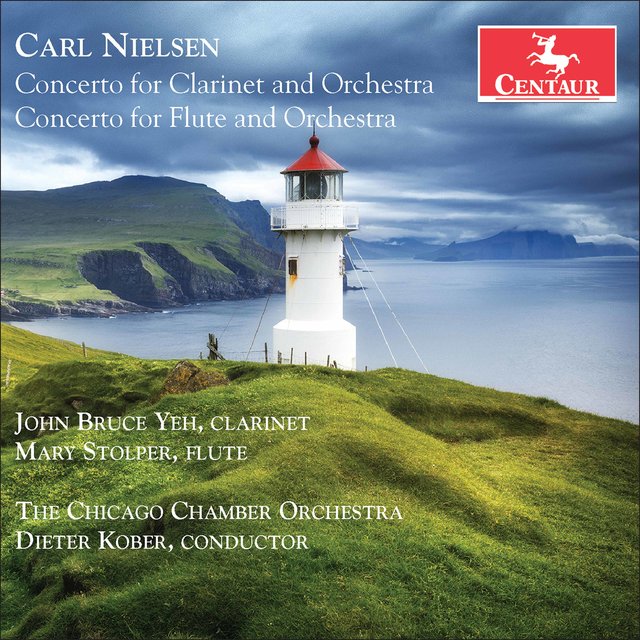 Bruce Duffie: We’re going to talk about
the basset horn, but you are a clarinet player by trade?
Bruce Duffie: We’re going to talk about
the basset horn, but you are a clarinet player by trade?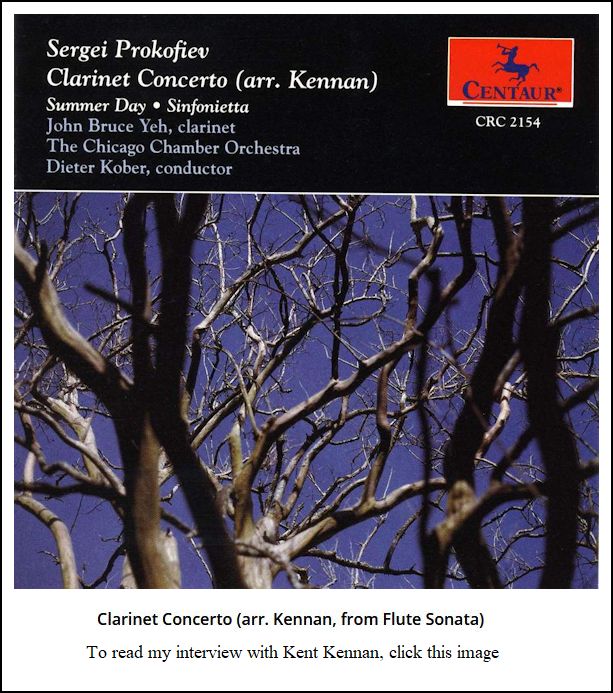 Yeh: No. If you’re talking about soprano
basset horns, you might be referring to what’s commonly known nowadays
as the basset clarinet, which is the clarinet in A, or even B-Flat,
that has been extended down to written C. I happen to have one,
and nowadays more and more performers are playing the Mozart clarinet
works on these instruments. For example, the Clarinet Concerto
and the Clarinet Quintet are played on the extended A clarinet,
which is known as the basset clarinet. So, if you want to talk
about the different ranges and the different sizes of basset horn,
this isn’t a true basset horn but it’s a basset clarinet.
Yeh: No. If you’re talking about soprano
basset horns, you might be referring to what’s commonly known nowadays
as the basset clarinet, which is the clarinet in A, or even B-Flat,
that has been extended down to written C. I happen to have one,
and nowadays more and more performers are playing the Mozart clarinet
works on these instruments. For example, the Clarinet Concerto
and the Clarinet Quintet are played on the extended A clarinet,
which is known as the basset clarinet. So, if you want to talk
about the different ranges and the different sizes of basset horn,
this isn’t a true basset horn but it’s a basset clarinet.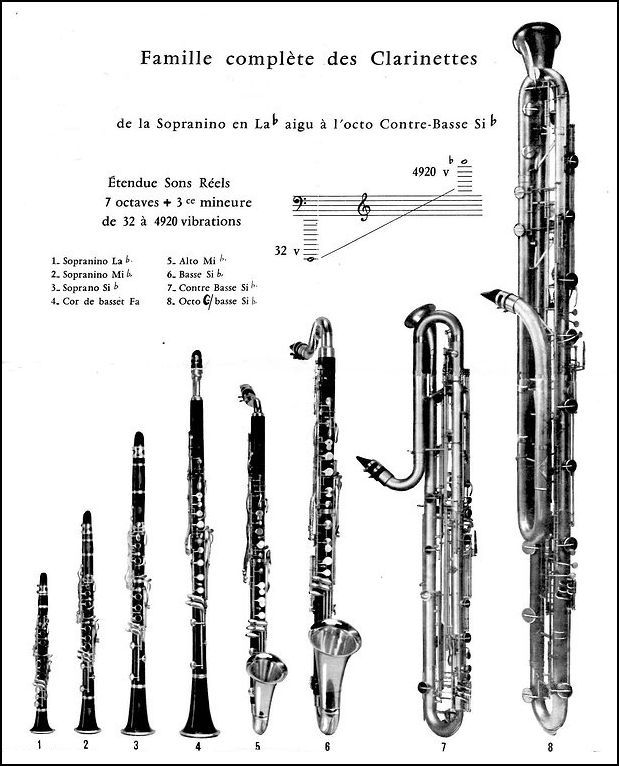 BD: Do you spend a lot of
time whittling on reeds?
BD: Do you spend a lot of
time whittling on reeds?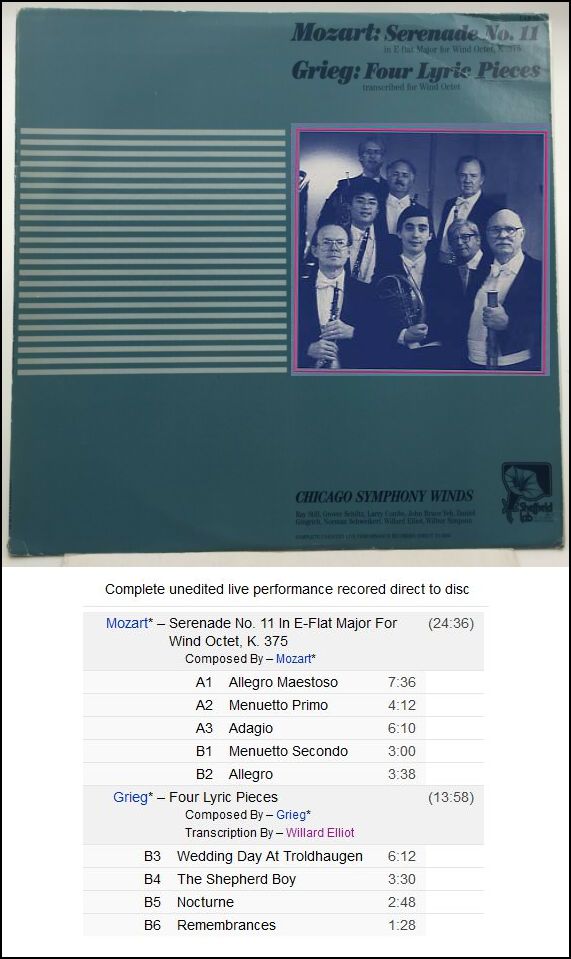
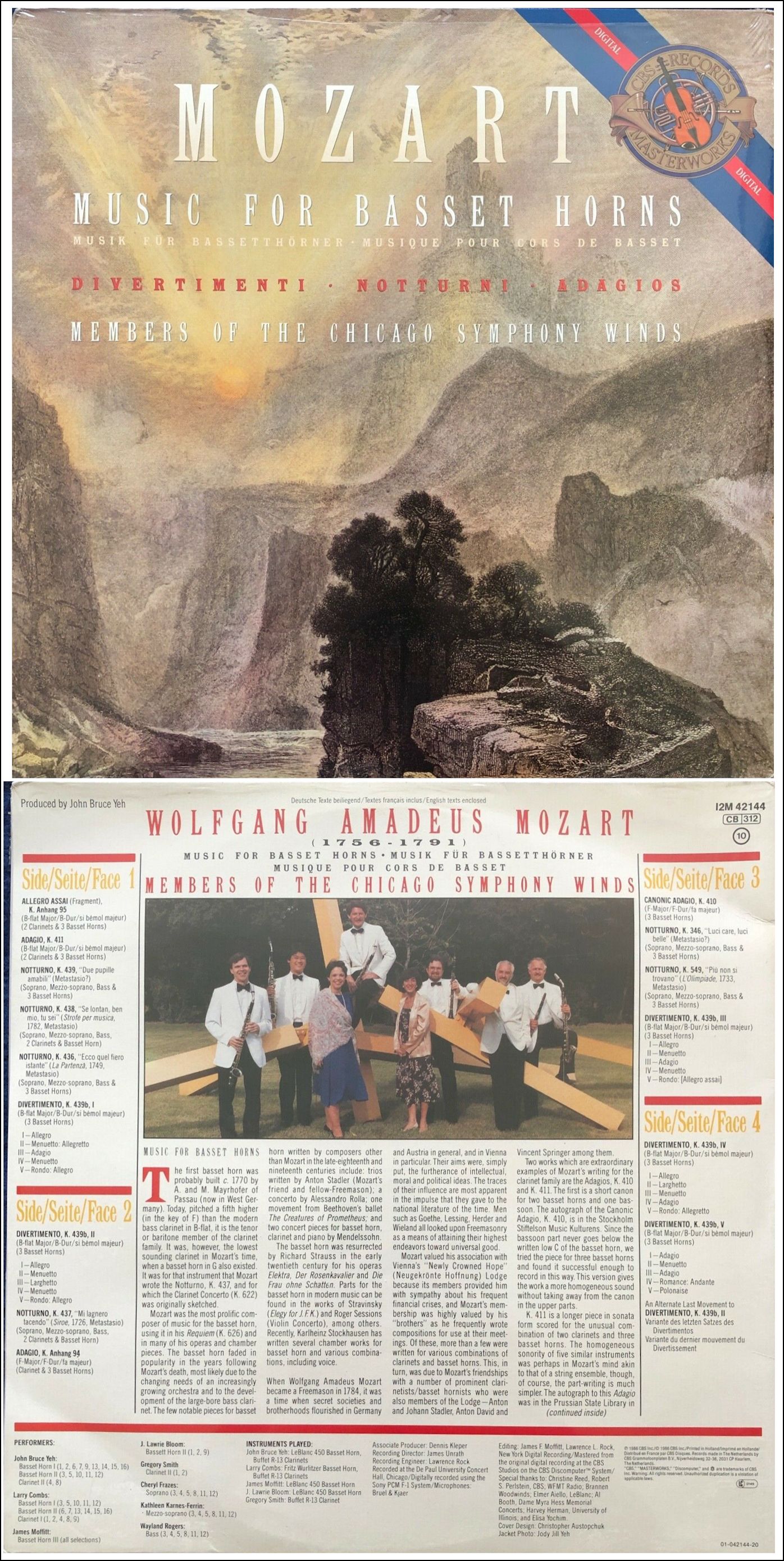
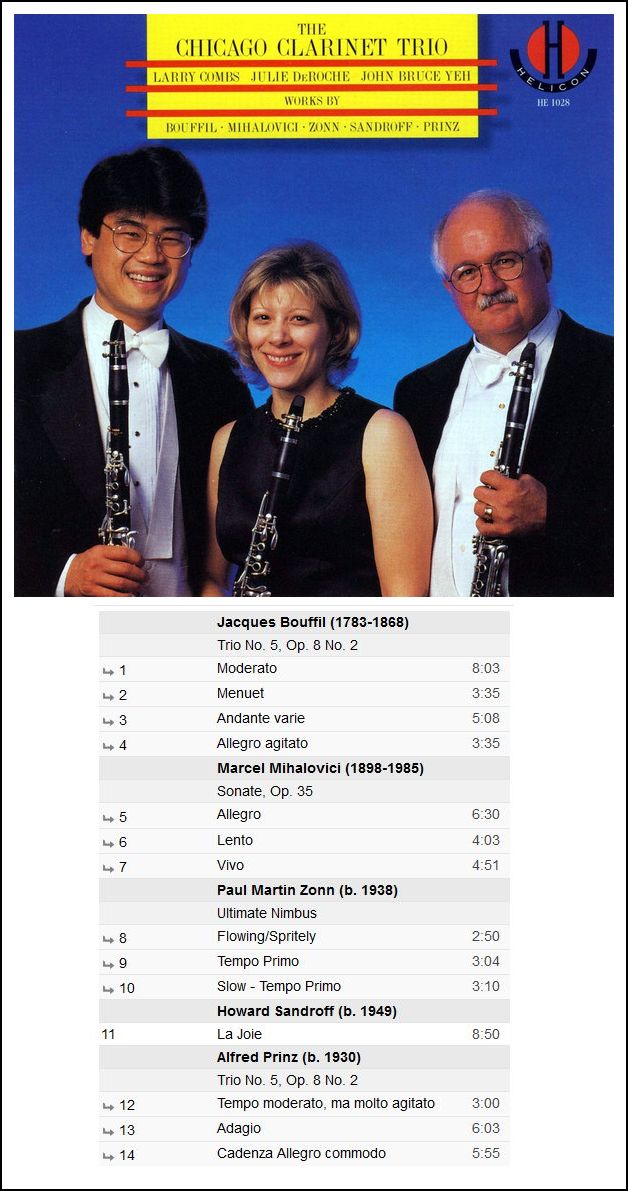 BD: Should the performer or
the conductor be involved in all of this to make sure that that
kind of thing doesn’t happen?
BD: Should the performer or
the conductor be involved in all of this to make sure that that
kind of thing doesn’t happen?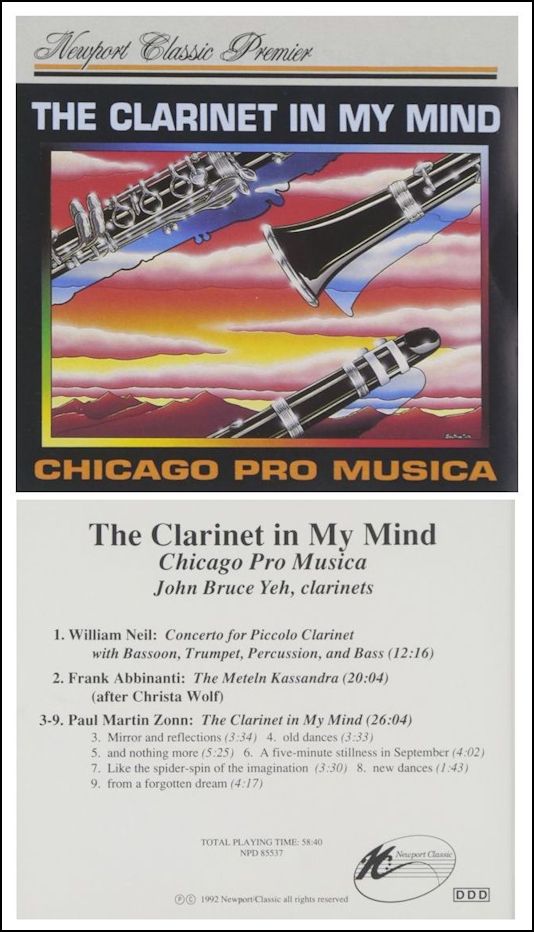
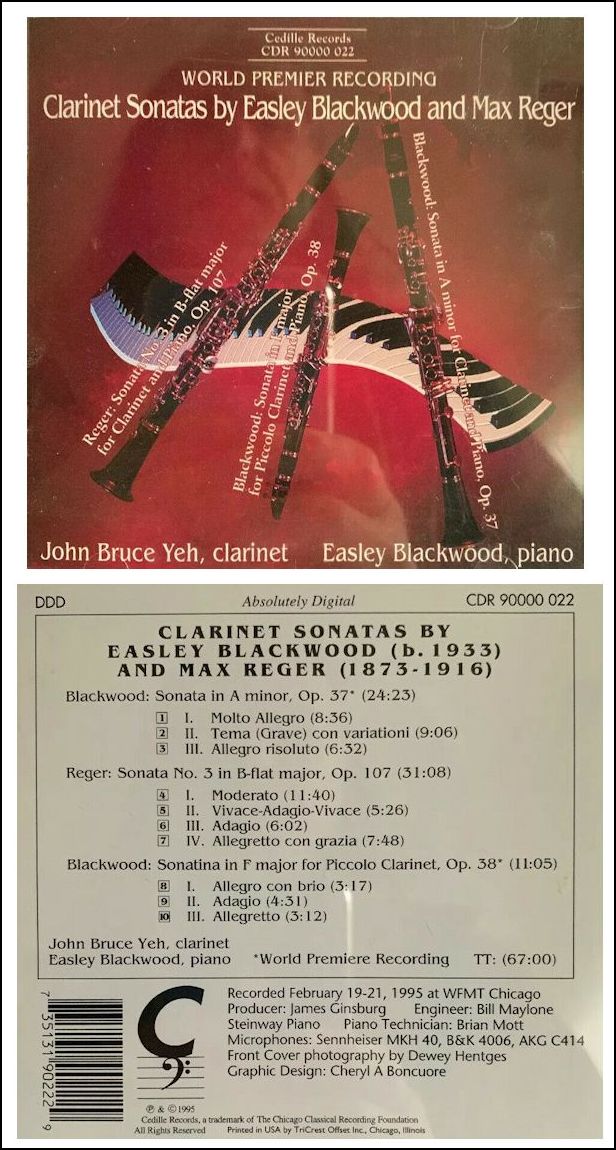
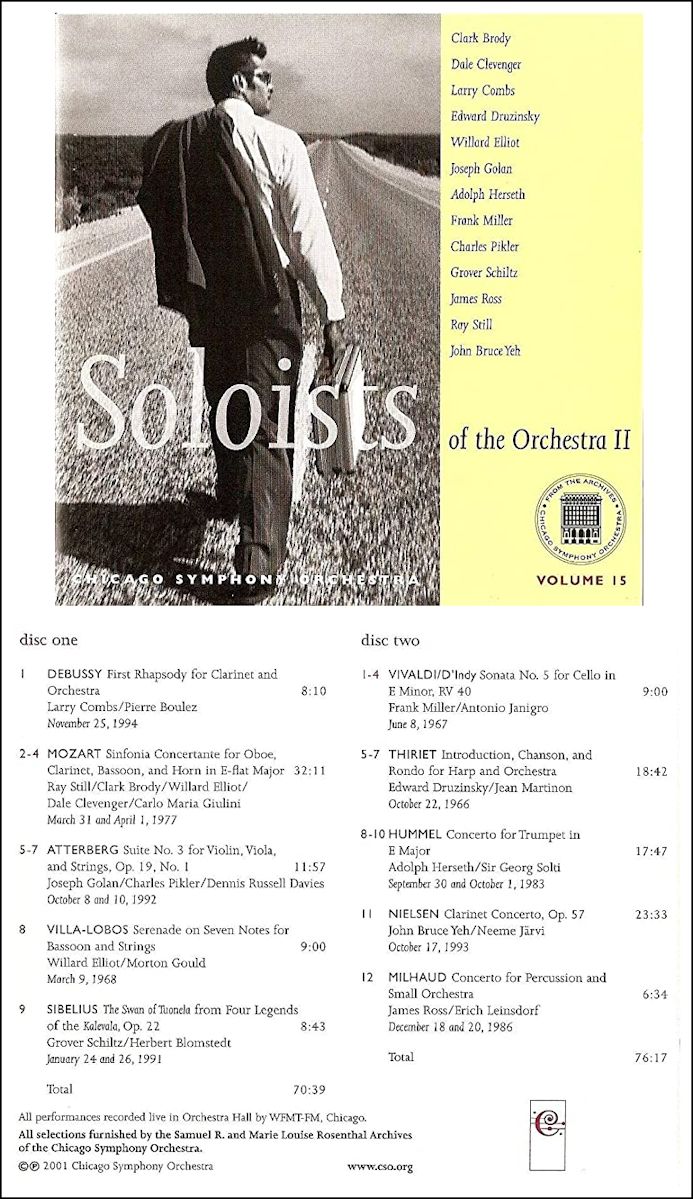
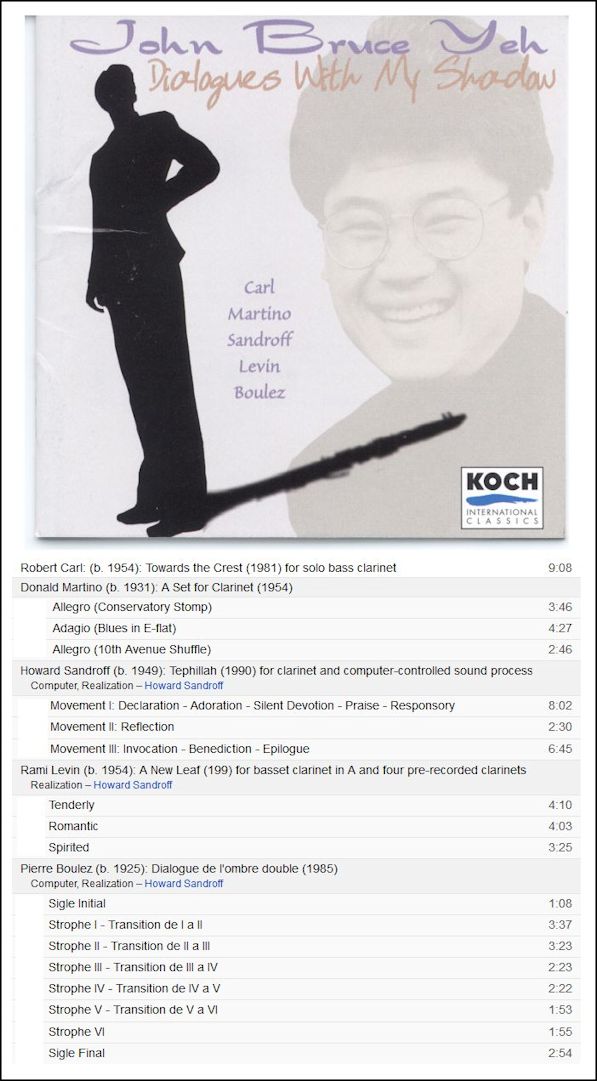
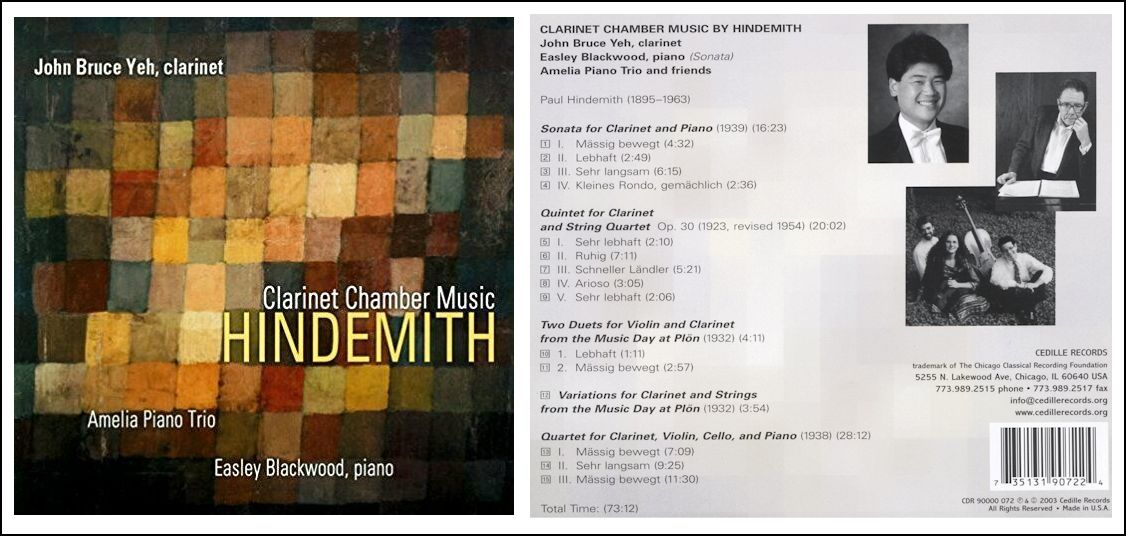
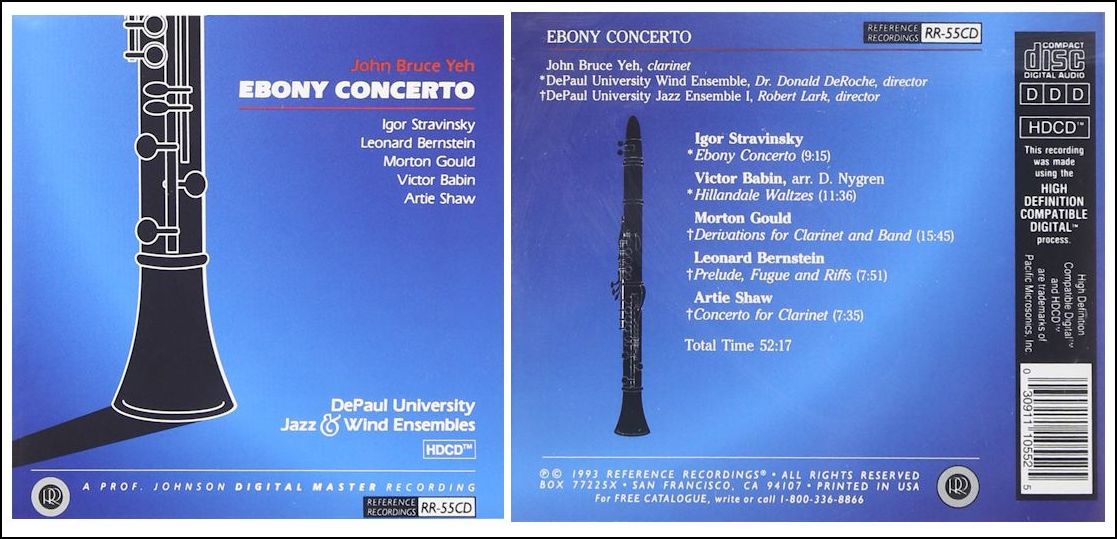
© 1987 & 1996 Bruce Duffie
The first conversation was recorded at the home of John Bruce Yeh in suburban Chicago on July 9, 1987. Portions were broadcast on WNIB two weeks later. The second conversation was recorded at Bruce Duffie’s home studio on May 14, 1996, and portions were aired the following year. This transcription was made in 2021, and posted on this website at that time. My thanks to British soprano Una Barry for her help in preparing this website presentation.
To see a full list (with links) of interviews which have been transcribed and posted on this website, click here. To read my thoughts on editing these interviews for print, as well as a few other interesting observations, click here.
Award - winning broadcaster Bruce Duffie was with WNIB, Classical 97 in Chicago from 1975 until its final moment as a classical station in February of 2001. His interviews have also appeared in various magazines and journals since 1980, and he now continues his broadcast series on WNUR-FM, as well as on Contemporary Classical Internet Radio.
You are invited to visit his website for more information about his work, including selected transcripts of other interviews, plus a full list of his guests. He would also like to call your attention to the photos and information about his grandfather, who was a pioneer in the automotive field more than a century ago. You may also send him E-Mail with comments, questions and suggestions.